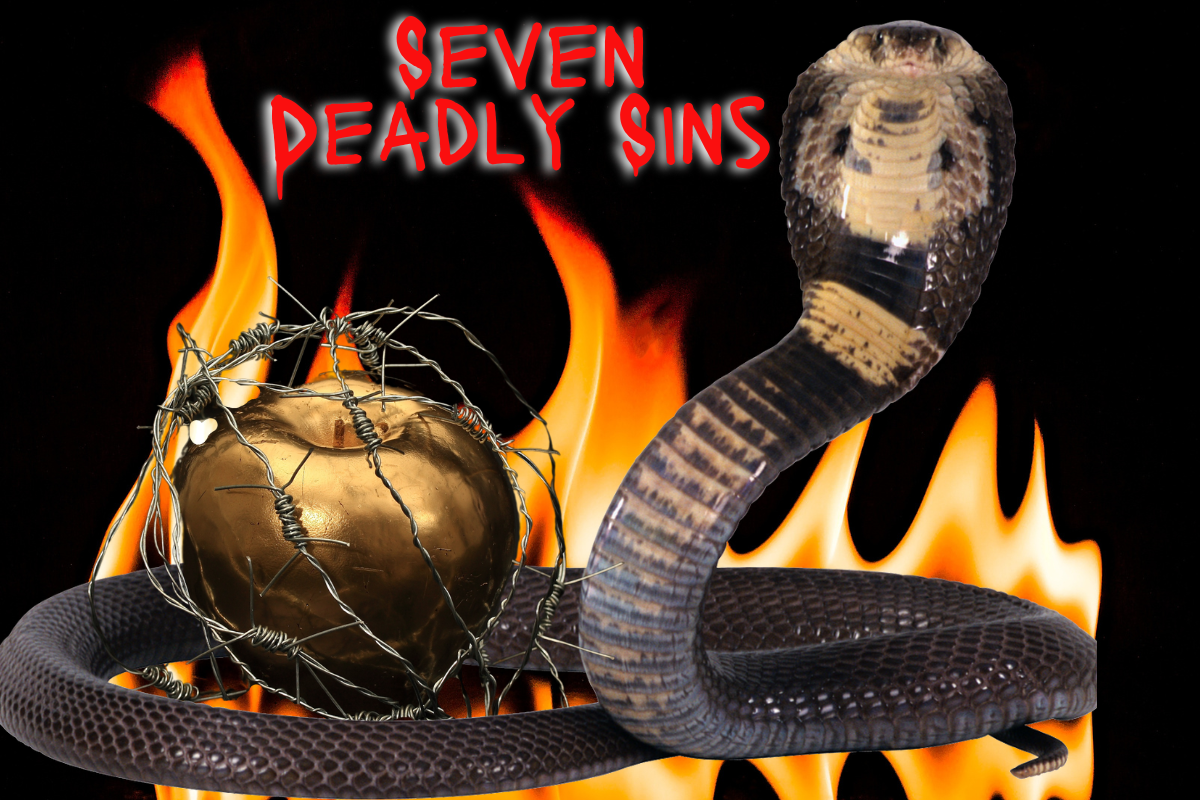Our human potentiality to sin results from Original Sin. Actual sin occurs when we choose to turn away from God in a defective operation of our free will.
“There are six things the Lord hates, yes, seven are an abomination to him; Haughty eyes, a lying tongue, hands that shed innocent blood, a heart that plots wicked schemes, feet that are quick to run to evil, the false witness who utters lies, and the one who sows discord among kindred” (Proverbs 6:16-19).
Originally, the seven vices detailed in Proverbs included pride, lying, murder, intrigue, readiness for evil, bearing false witness, and stirring up discord. Medieval authors and artists popularized the concept of these seven vices as well as their corresponding virtues. The fourth-century Christian monk Evagrius Ponticus summarized his “eight evil thoughts” as gluttony, lust, avarice, anger, sloth, sadness, vainglory, and pride. His student, Saint John Cassian, shared that concept with the Western Church. In the sixth century, Pope Saint Gregory I removed “sloth,” added “envy,” and named “pride” the ruler over the other seven vices, which became known as the seven deadly sins. Saint Thomas Aquinas revisited the list in the thirteenth century. He eliminated “sadness” and brought back “sloth.” The Catechism of the Catholic Church supports his version of the list with “vainglory” being merged into “pride.”
“Vices can be classified according to the virtues they oppose, or also be linked to the capital sins which Christian experience has distinguished, following Saint John Cassian and Saint Gregory the Great. They are called “capital” because they engender other sins, other vices. They are pride, avarice, envy, wrath, lust, gluttony, and sloth or acedia” (CCC 1866 ).
We refer to these seven sources of sin as “capital,” “cardinal,” or “deadly” sins, although they are really fundamental vices that threaten spiritual death by forming our actual sins. The word capital is derived from the Latin caput meaning head. Just as our heads lead our bodies, the capital sins lead us to further immorality. In a similar way, the word cardinal conveys the fundamental nature of vice. About a century after Saint Thomas Aquinas published his work, capital began to mean deadly in the English language. A capital crime, for example, could be punishable by death or cause death. A deadly sin, therefore, would be considered a grave or destructive act. These are often confused with mortal sins, which are also grave acts but are committed with full knowledge of the gravity and full consent of the sinner’s will. Mortal sins lead to spiritual death.
Vice destroys our soul by corrupting our union of love with God and our relationships with other people. When we allow our actions to be controlled by vice, we become a danger to ourselves and to others to the extent that these tendencies pervade our lives. Succumbing to vice facilitates our ability to commit sin, which is an abuse of reason. When we become entrenched in sin, our evil behavior becomes normalized to us. In such a way, sin exhorts itself with disordered reason, compounds itself with progressively worsening acts, and rationalizes despicable behavior as praiseworthy pursuits. Capital vices are like spiritual red flags that warn us of the potential peril we face.
The concept of the seven deadly sins continues to be popularized in society through movies, television programs, art, music, and literature. Sherwood Schwartz, creator of Gilligan’s Island, admitted that each of the show’s characters represented one of the seven deadly sins. Fans have even tried to personify the sins in relation to the characters of SpongeBob SquarePants. As we study this topic, you will readily spot these behaviors in yourself, in the people who surround you, and in pop culture or media.
Over the next several weeks in our “Weekly Challenge” section, we will examine each of the seven deadly sins described below.
Pride, often associated with vainglory, is an excessive love of one’s self.
Envy is sadness for or a desire to possess the goods of another.
Wrath or unreasonable anger is categorized by uncontrolled feelings of hatred and desire for revenge.
Sloth, also known as acedia, is described as physical, mental, and spiritual laziness.
Avarice is greed demonstrated by a perverse attachment to material goods and wealth.
Gluttony is exhibited through inordinate consumption, most commonly of food or drink.
Lust is an intense desire for pleasure, typically in the form of sex, money, power, or fame.
Our weekly probe into these seven deadly sins will include their “daughters,” or the subsets of sin to which they give birth. Their daughters reveal the habits that that we might exhibit as a form of the capital vice. Because we are not immune to evil, it is important to recognize these behaviors and remedy them before they lead us to sin. This month, please comment on how you have used spiritual red flags to avoid temptation or how sinful inclinations can spiral into trouble. In September, we will explore ways to overcome vice.



